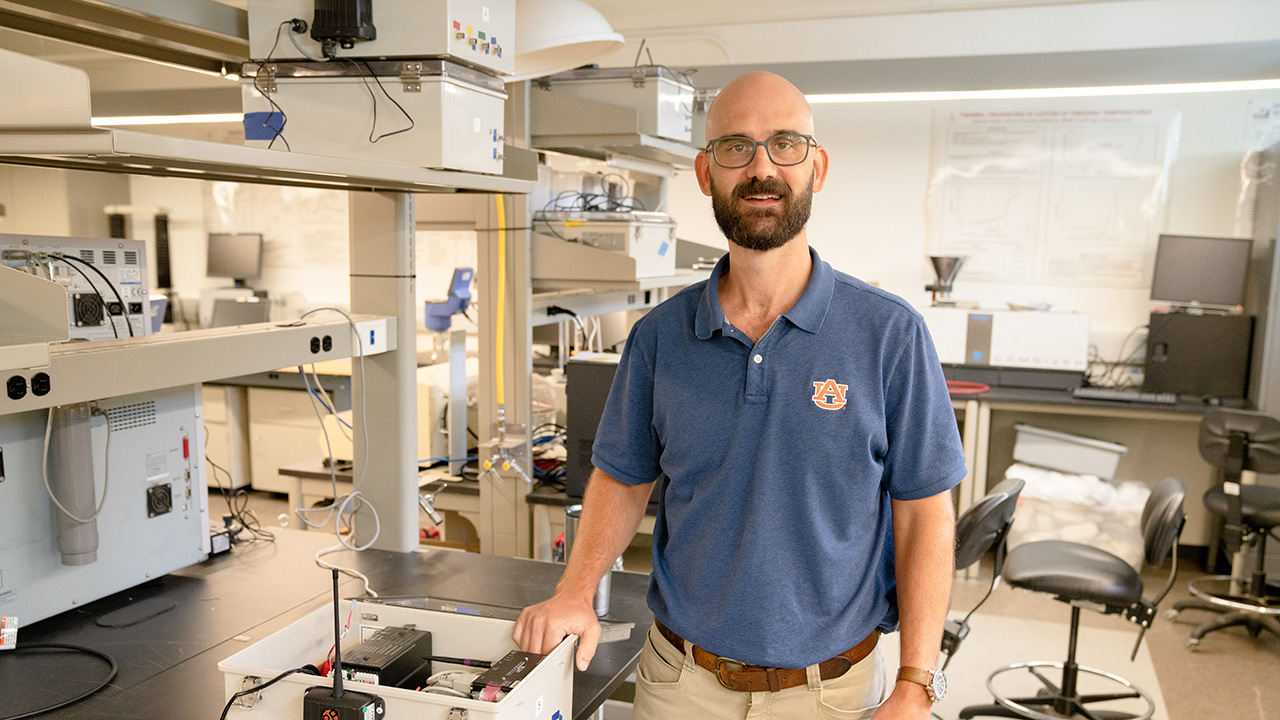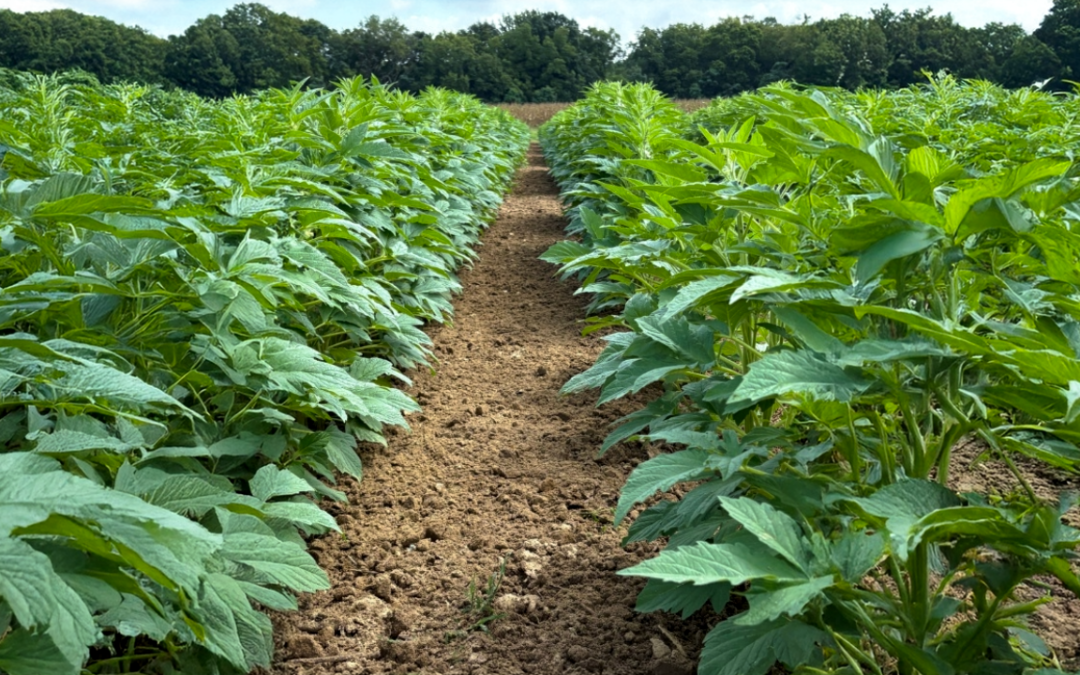The average broiler chicken lives 6–8 weeks and spends much of that time indoors, but researchers at Auburn University are investigating the use of natural light in broiler houses and its effects on bird performance and welfare.
A team of agricultural engineers, animal scientists and extension specialists at the Alabama Agricultural Experiment Station was awarded $300,000 by the USDA National Institute of Food and Agriculture to study the impact natural light will have on commercial broiler flocks’ growth and welfare. The team will also develop a method for measuring the environmental impact of using more natural light, as well as prepare light-focused presentations for Alabama poultry producers.
“In the past five to 10 years, there has been a concerted effort to include more animal welfare parameters into broiler production,” said John Linhoss, assistant professor of biosystems engineering at Auburn and the grant team’s leader. “We are trying to provide the science for some of the decisions companies and producers have to make.”
Most broiler houses today are lit by LED lighting with no windows and only limited sunlight streaming through ventilation fans, according to Linhoss. Producers favor windowless houses for their greater energy efficiency. Windows also create uneven light zones, which can lead to varying chicken activity and varying growth rates.
However, Americans are becoming increasingly concerned about how their food is produced, and large poultry processors have, in some cases, shifted contracts to producers whose facilities meet more stringent animal welfare guidelines, according to Linhoss. One such set of guidelines created by the Global Animal Partnership includes a requirement for natural light. This leaves companies with questions about whether to install natural light and how. Linhoss and his research will begin to provide answers on these questions.
The first-of-its-kind experiment will continuously measure light intensity and duration in two different settings, one with natural light and a second with traditional LED light. The researchers will then use special software to map light and temperature patterns throughout the broiler houses.
“Until you map it, it’s hard to see what’s going on in a house,” Linhoss said.
Birds in a research house with natural light will be compared to those with LED light, and researchers will analyze how the flocks differ in their feeding, drinking, flapping, scratching, foraging and fighting behaviors. Birds will also be monitored for feed intake, body weight, weight gain and mortality with the intent of determining if there is a difference between birds in a research house with natural light versus LED light.
“You want to have healthy birds in houses that are providing a good growing environment,” Linhoss said. “What I’m trying to do with this grant is really help the industry. If a company wants to know what’s the best way to put windows in a house to improve spatial uniformity, heat loss/gain, etc.—that’s one of the major drivers of this project.”
Alabama is the second largest producer of broilers in the U. S. by head, with a cash value of nearly $3.5 billion, according to the USDA’s latest census of agriculture. Broilers account for 59% of Alabama’s total agricultural economic output. Linhoss’s research has the potential to help Alabama broiler producers adapt to shifting consumer demand by providing insight into the optimal way to incorporate natural light in their broiler houses.
The scale of broiler production in the U.S. also means that any widespread changes in how chickens are raised will likely have an impact on the environment. The 9.17 billion broilers produced annually are the largest consumers of America’s 76 million acres of soybeans, according to USDA reports. Soybeans provide a critical source of cheap protein in broiler diets.
Any changes to how broilers are produced might require more feed or more time spent on feed. This will likely translate into a greater demand for soybeans—and more water, fertilizer and herbicide to grow them. If supply can’t be increased, the greater demand will likely make soybean-based chicken feed more expensive, cutting into profits and yielding more expensive chicken for the consumer.
The research team will tackle one small part of this equation by developing a framework for comparing the environmental impacts of natural versus artificial lighting in broiler houses. Specifically, they will create a method for systematically measuring fuel, power and water consumption for producing broilers in houses with natural light versus those with traditional LED light.
Importantly, the findings of the research will be shared and discussed with poultry producers. Linhoss’s own extension background has informed his approach to working with the poultry industry. The grant team includes extension faculty, and the research project will engage Alabama poultry producers during various presentations hosted by the team beginning in spring 2025. There, the research team will share their findings with producers and get feedback.
“I’m really proud of the fact that this grant has a large extension component,” Linhoss said. “We involve the industry through this workshop and make it something that is collaborative and come up with the best solution possible and not just, ‘Hey, I’m doing research; here it is.’”
The workshop will serve to foster a conversation about the feasibility of incorporating natural light into broiler houses. The hope, according to Linhoss, is “to say as and industry where are we going with lighting.”
This three-year project is conducted in conjunction with the USDA Agricultural Research Service. Jeremiah Davis, Brendan Higgins and Jesse Campbel of the Auburn Department of Biosystems Engineering, along with Bethany Baker-Cook of the Auburn Department of Poultry Science, are faculty contributing to the grant. Joseph Purswell and Hammed Olanrewaju of the USDA are also grant team members.





